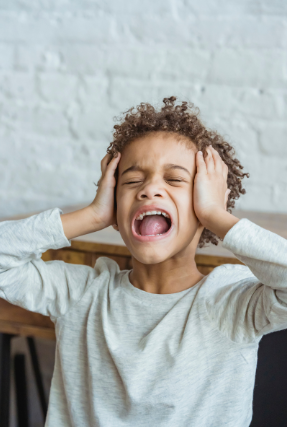
Helping Kids with Anxiety Navigate School-to-Summer Transitions
The last day of school is often met with cheers and excitement—but for many children, especially those who experience anxiety or have a history of trauma, the transition from school to summer can be surprisingly difficult.
At Pathway Caring for Children, we work with children and families who face big feelings during times of change. When structure shifts, routines fall away, and familiar faces are replaced with open-ended days, some children feel unsettled, overwhelmed, or even scared.
If you’re noticing more meltdowns, clinginess, mood swings, or withdrawal at the start of summer, you’re not alone. These are common signs of anxiety, and there are ways you can help your child feel safe and supported during this time.
Why Transitions Can Be Hard for Anxious Kids
Children with anxiety often rely on routines and predictability to feel secure. The school year provides a clear structure—where to go, what to do, and who they’ll see each day.
When that structure ends abruptly, it can bring up feelings of:
- Loss of control
- Uncertainty about what’s next
- Social anxiety if friendships pause during summer
- Worry about new or unfamiliar activities
- Fear that something bad might happen without their usual routine
For children in foster care or those with trauma histories, these feelings can be even more intense. Transition periods can resurface past experiences of instability or sudden change.
Signs a Child May Be Struggling with the Transition
Not all children will say they feel anxious—but their behavior might tell the story. Look for:
- Trouble sleeping or changes in appetite
- Frequent stomachaches or headaches
- Increased clinginess or irritability
- Avoiding summer activities or refusing to leave the house
- Regressing to younger behaviors (bedwetting, tantrums, etc.)
- Saying things like “I’m bored” when deeper feelings are at play

Understanding the “why” behind these behaviors is the first step toward helping.
Strategies to Support the Transition
Here are some ways you can ease the shift from school to summer:
Create a Flexible Summer Routine
Establish basic structure for the day: wake-up time, meals, activities, quiet time, and bedtime. It doesn’t have to be rigid, but giving your child a sense of what to expect can reduce anxiety.
Use Visual Schedules
For younger kids or those with trauma histories, a daily or weekly chart can make abstract time feel more concrete. You can use pictures or simple words to help them see what’s coming next.
Talk About What Will Stay the Same
Reassure your child that not everything is changing. Maybe they’ll still have breakfast at the same table, visit grandma on weekends, or have family game night on Fridays. Familiarity brings comfort.
Build in Calming Tools
Help your child learn how to calm their body and mind. Try deep breathing, sensory play, quiet reading time, music, or a calm-down space in your home.
Give Choices Where You Can
Anxious kids often feel powerless. Offering small, age-appropriate choices throughout the day can help them feel more in control: what to wear, which snack to eat, or what park to visit.
Limit Surprises
If plans change, give your child as much notice as possible. Talk them through what to expect for the day or week, and let them ask questions.
When to Seek Extra Support
If your child’s anxiety is interfering with daily life, social interaction, or their ability to enjoy summer activities, professional support may help. Therapy can give children tools to understand and manage their anxiety in safe, age-appropriate ways.
At Pathway, we offer trauma-informed mental health services for children, teens, and families. Our counselors create a safe space where kids can learn to cope with big feelings and caregivers can learn how to support them.